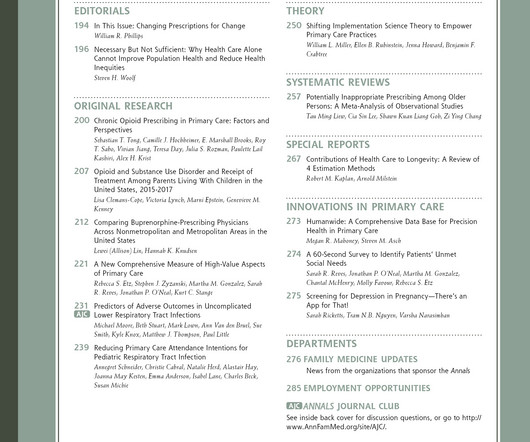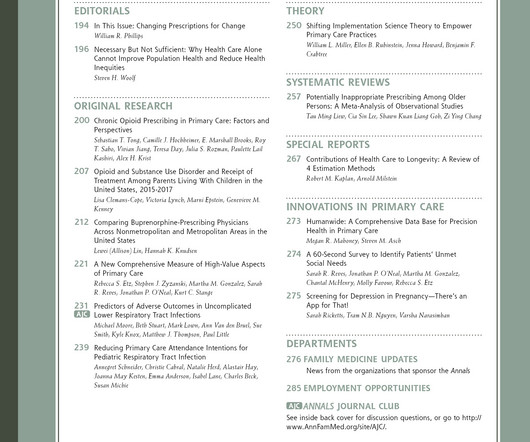Disaster preparedness, What we have learned from COVID 19 pandemic [COVID-19]
Annals of Family Medicine
NOVEMBER 20, 2024
Study design and analysis: Descriptive statistics were used in SPSS to present demographics and responses and Chi-squared tests evaluated relationships between demographics and attitudes. During the pandemic, 62% (n=21) used telehealth tools, including 50% (n=17) by telephone, 50% (n=17) via live video, and 24% (n=8) through text messaging.












Let's personalize your content